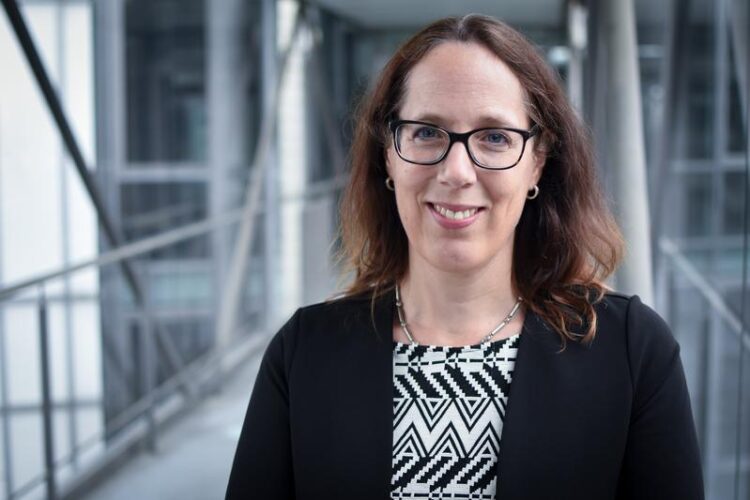Making green hydrogen technologies industrially viable

Prof. Dr.-Ing. Christina Roth, University of Bayreuth.
UBT / J. Rennecke
German-New Zealand project on water electrolysis.
The production of “green hydrogen” by electrolysis from renewable electricity is a key technology in the energy transition. One unsolved problem so far has been the need for expensive, hard-to-find precious metals. This is where the “HighHy” project, launched on 1 August 2022, comes in, in which the University of Bayreuth collaborates with Fraunhofer IFAM and three universities in New Zealand. Together, the partners want to develop a cost-effective and resource-saving process for water electrolysis that uses nickel and manganese as catalyst materials. The BMBF is funding the project for three years, the University of Bayreuth will receive a total of around 240,000 euros.
In June 2021, the German Federal Ministry of Education and Research (BMBF) had launched the funding call “Green hydrogen cooperation with New Zealand “. Three projects, including “HighHy,” were recently selected for funding. “Germany and New Zealand have a strong interest in transforming their energy systems into more sustainable and efficient technologies. One focus of bilateral cooperation is green hydrogen technology, which is a key component of Germany’s decarbonization strategy. The New Zealand universities of Canterbury, Auckland and Wellington, the Fraunhofer Institute for Manufacturing Technology and Advanced Materials in Dresden, and the University of Bayreuth, which has launched its own hydrogen strategy in 2020, are partners who are strong in research and highly motivated to cooperate in advancing green hydrogen technology with innovative solutions,” explains Bayreuth project coordinator Prof. Dr.-Ing. Christina Roth, who is Chair of Electrochemical Process Engineering at the Faculty of Engineering Science. Students, doctoral students, and postdocs from both countries will also be involved in the upcoming research work. “I very much hope that we will succeed in getting young scientists in Germany and New Zealand interested in electrochemical energy technologies,” says Roth.
In water electrolysis, water is split into oxygen and hydrogen. The hydrogen is called “green” if the electricity used for the splitting comes from sustainable sources such as the sun and wind. The starting point of the “HighHy” project is AEM electrolysis. This is a still young, promising technology based on anion exchange membranes (AEM). However, it is hampered by the insufficient speed of the oxygen evolution reaction (OER). If this reaction proceeds too slowly, it has a detrimental effect on the overall hydrogen production process. For this reason, AEM electrolysis has not yet been able to establish itself as an industrial process. Therefore, the German and New Zealand research partners in the “HighHy” project want to develop highly active catalysts that ensure that the oxygen evolution reaction takes place quickly and reliably. Crucially, these catalysts do not contain rare precious metals such as iridium, but work with nickel and manganese – two readily available and inexpensive metals.
Under the leadership of Prof. Dr.-Ing. Christina Roth, the Electrochemical Process Engineering research group at the University of Bayreuth will make fundamental research contributions to the development of catalyst materials and new methods of electrode manufacture. In collaboration with Fraunhofer IFAM and the New Zealand partners, highly efficient anodes will be designed, manufactured via environmentally friendly synthesis routes, and tested directly in operation under real working conditions. The common goal is to further develop AEM electrolysis so that it can be used on an industrial scale to produce green hydrogen.
Wissenschaftliche Ansprechpartner:
Prof. Dr.-Ing. Christina Roth
Chair of Electrochemical Process Engineering
University of Bayreuth
Phone: +49 (0)921 / 55-7200 and -7201
E-mail: christina.roth@uni-bayreuth.de
Media Contact
All latest news from the category: Power and Electrical Engineering
This topic covers issues related to energy generation, conversion, transportation and consumption and how the industry is addressing the challenge of energy efficiency in general.
innovations-report provides in-depth and informative reports and articles on subjects ranging from wind energy, fuel cell technology, solar energy, geothermal energy, petroleum, gas, nuclear engineering, alternative energy and energy efficiency to fusion, hydrogen and superconductor technologies.
Newest articles

A universal framework for spatial biology
SpatialData is a freely accessible tool to unify and integrate data from different omics technologies accounting for spatial information, which can provide holistic insights into health and disease. Biological processes…

How complex biological processes arise
A $20 million grant from the U.S. National Science Foundation (NSF) will support the establishment and operation of the National Synthesis Center for Emergence in the Molecular and Cellular Sciences (NCEMS) at…

Airborne single-photon lidar system achieves high-resolution 3D imaging
Compact, low-power system opens doors for photon-efficient drone and satellite-based environmental monitoring and mapping. Researchers have developed a compact and lightweight single-photon airborne lidar system that can acquire high-resolution 3D…





















